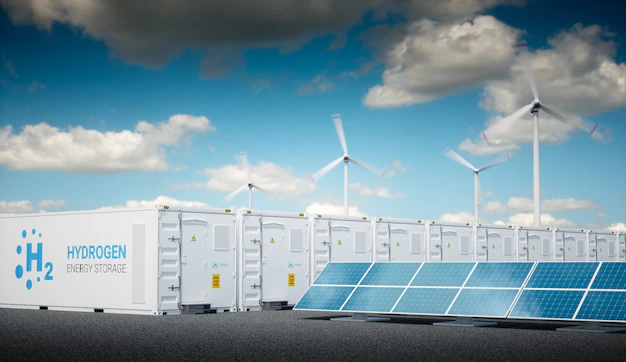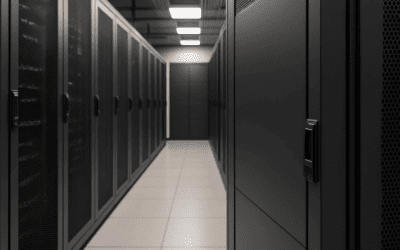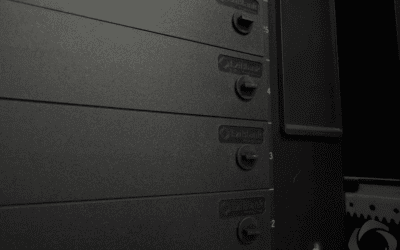Green Data Center Concepts
When it comes to data centers and energy efficiency, you may of heard the term green data center being used, and found yourself wondering if it’s really such a thing.
You may have questions like:
Does green necessarily mean data center operations and facilities?
How does environmentally conscious and data center relate?
How do green data centers work?
All of these questions can start to seem overwhelming.
While there is no standard definition of a green data center, today we will be covering some of the most important concepts you should get a handle on.
Keep reading to find out the answers to all of your green data center questions.
In the article:
[—ATOC—]
[—TAG:h2—]
What are the main concepts of green data centers?
Data centers have become essential to the way we conduct business, govern our societies, educate our children, and entertain ourselves. However, these facilities are typically large, expensive to build and operate, use significant amounts of energy, and generate heat.
As the world grows more aware of the impacts of environmental destruction, there has been a shift to focus on green solutions.
This is where a green data center comes in.
A green data center is a data center that has been designed with the goal of increasing energy efficiency and minimizing environmental impact.
The design and operation of a green data center is based on innovative technology and strategies including three main concepts: energy efficiency, renewable energy, and sustainability.
Being an energy efficient data center
Energy is the most expensive and environmentally damaging component in a data center.
Understandably, energy efficiency is the most important factor in green data center design.
By reducing energy usage and power consumption used by data centers, we can decrease our environmental impact and save money.
Energy efficient data centers can be measured in many ways, but the most important performance metrics are related to energy efficiency.
The two most important performance metrics include:
Power usage effectiveness (PUE)
Power usage effectiveness (PUE) is a metric used to measure the efficiency of a data center, developed by Green Grid:
- An electronic device measures the data center power consumption.
- This is then used to calculate the power supplied at the data center divided by the actual data center power use for equipment.
- This will result in a ratio of a number that is indicative of effective power uses.
- The lower a PUE, or as close to 1 as possible, means that the data center is more efficient and wastes less power.
Carbon usage effectiveness (CUE)
CUE is another metric to measure data center energy efficiency.
It combines energy consumed by data centers with the carbon dioxide produced.
As a result, it is important to reduce carbon dioxide emissions and reduce our carbon footprint.
The importance of sustainability
Sustainability is another one of the most important concepts when it comes to green data centers.
By definition, a sustainable data center is one that can maintain its operations over long periods of time without damaging the environment or exhausting resources.
This means that a data center must be designed and operated in a way that minimizes its environmental impact and uses renewable energy (more on this soon).
There are a number of technologies and strategies that can be used to make your data center more sustainable:
- Moderating server use: One way to make a green data center is to use moderating server use. This means that you can use less powerful servers when it is not needed. For example, if your website is not busy, you can use a lower powered server.
- Free air cooling. Instead of using power to cool your data center, you can take advantage of free air available outside. This can be tricky depending on the location of your data center but if possible is a big step to reducing power used for cooling to further maximize energy efficiency.
- Server and rack level power metering: This is a way to measure energy usage and understand how much energy each server and racks in your existing data center uses. This can help you to make decisions about how to reduce your energy usage and save money.
- Hot and cold aisle containment: This involves using special panels and the data center equipment to create separate areas containing either the hot or cold aisles. This allows the warm air to be recycled and reduces the amount of energy needed to cool the data center.
- Recycle and reuse materials: There are many reusable materials that can be used including reusable cable ties. Not only are they reusable, but they can also be recycled when you’re done with them. You can also use recycled content materials in your data center to help reduce the amount of waste produced.
Using renewable energy sources
Renewable energy is a key part of green data center design. Using renewable energy sources preserves our natural resources and helps to reduce greenhouse gas emissions.
Some of the most common renewable energy sources used include:
- Solar panels. Solar panels are a great way to get renewable energy into your data center. They can be installed on the roof or on the ground near the data center. Solar panels turn the sun’s rays into electricity that can be used to power a data center.
- Wind turbines. Wind turbines are another great way to get renewable energy into your data center. Wind turbines use wind to turn the propeller blades of the turbine and generate electricity.
- Hydroelectric power. Hydroelectric power uses water to create power and is a very efficient way to get power into your data center.
The concepts for going green
The bottom line is that there are a number of important concepts you should understand when making your data center more green.
With an understanding you can now take the first steps to implementing energy efficient technologies and strategies.
If you need further evidence of how being a green data center can work for you, look no further than our green data center case study, or if you’re not yet convinced head to green data center advantages.




